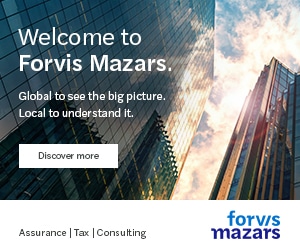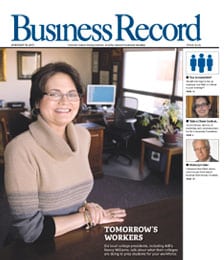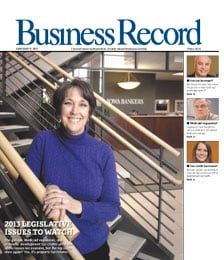Risky business

.floatimg-left-hort { float:left; } .floatimg-left-caption-hort { float:left; margin-bottom:10px; width:300px; margin-right:10px; clear:left;} .floatimg-left-vert { float:left; margin-top:10px; margin-right:15px; width:200px;} .floatimg-left-caption-vert { float:left; margin-right:10px; margin-bottom:10px; font-size: 12px; width:200px;} .floatimg-right-hort { float:right; margin-top:10px; margin-left:10px; margin-bottom:10px; width: 300px;} .floatimg-right-caption-hort { float:left; margin-right:10px; margin-bottom:10px; width: 300px; font-size: 12px; } .floatimg-right-vert { float:right; margin-top:10px; margin-left:10px; margin-bottom:10px; width: 200px;} .floatimg-right-caption-vert { float:left; margin-right:10px; margin-bottom:10px; width: 200px; font-size: 12px; } .floatimgright-sidebar { float:right; margin-top:10px; margin-left:10px; margin-bottom:10px; width: 200px; border-top-style: double; border-top-color: black; border-bottom-style: double; border-bottom-color: black;} .floatimgright-sidebar p { line-height: 115%; text-indent: 10px; } .floatimgright-sidebar h4 { font-variant:small-caps; } .pullquote { float:right; margin-top:10px; margin-left:10px; margin-bottom:10px; width: 150px; background: url(http://www.dmbusinessdaily.com/DAILY/editorial/extras/closequote.gif) no-repeat bottom right !important ; line-height: 150%; font-size: 125%; border-top: 1px solid; border-bottom: 1px solid;} .floatvidleft { float:left; margin-bottom:10px; width:325px; margin-right:10px; clear:left;} .floatvidright { float:right; margin-bottom:10px; width:325px; margin-right:10px; clear:left;}
Mike Lang, CEO of Alliance Technologies Inc., claims he can make a decision in less than 20 minutes, which is a little different from what Alliance is used to, considering that former CEO Jim Brandl liked to take his time and look at every angle before shaking hands.
“I’m definitely more of a risk taker,” said Lang, who has reached the C-level rank at the ripe age of 40. “I tend to lead more from a feel or from a gut, so I tend to make a little bit quicker decisions than Jim.”
For Lang, who used to own a business outright and was his own boss, the pace has changed now that he’s a CEO with other partners to answer to, and he’ll admit that decisions take a little bit longer, but they’re definitely made with more perspective and thought, he said.
“Now, instead of just the buck stopping here – and whether the decision was right or wrong it was my decision – at Alliance Technologies I became one of three partners, and so decisions that I might have made in 20 minutes might take two or three weeks,” he said.
But despite the time it takes to make a deal, there are only two factors that matter most to Lang when he sits down to make a decision.
“The whole thing is risk versus reward,” he said. “You try to minimize the risk and you try to maximize the reward, and I am willing to take risk if the reward is great. You can spend time trying to evaluate the risk and trying to evaluate the reward, or you can just make an educated guess on how things will wind up.” Lang likes to take risks in anticipation of great rewards.
This way of doing business is fairly well known around Alliance, especially when it comes to those who have known Lang for some time.
“He’s not going to sugarcoat anything,” said Stacy Love, who has worked alongside Lang for more than a decade. “And from a business perspective, he knows when to be aggressive and when not to be.”
Lang’s predecessor is also familiar with his aggressive, risk-taking style.
“Mike doesn’t spend as much time on analysis as I would have,” Brandl said. “But that’s Mike’s forte. He loves the art of a deal, and that is a real strength for him. He loves to grow and push the envelope, and find bargains and find deals that he can put together; that is just his nature.”
But for Lang, pushing the envelope started well before his career at Alliance, dating back to his stint at Principal Financial Group Inc. Fresh out of the University of Northern Iowa with a degree in computer information systems and a minor in business, Lang landed a position at Principal, where he would stay for more than six years and move into management.
“I had a very good job, and I had already moved into management, and I had a good career ahead of me,” Lang said.
The good job with the good salary would soon lead to a different opportunity for Lang; six years into his career at Principal he was approached by his supervisors and asked to lead the way on a new software conversion.
“When I was at the Principal, I was put in a position where we were going to do away with a legacy system that handled our human resources, our benefits and our payroll, and we were gong to buy a new software package,” he said. “And so I was part of the team that identified that we would buy the PeopleSoft product. Then my role switched to making sure we had the consultants on staff that we needed to handle the PeopleSoft conversion.”
Lang explained that when Principal made the conversion to PeopleSoft, the company had to train its own people in the software because PeopleSoft didn’t have the consultants needed to come in and do the conversion training. This lit a light bulb for Lang, who noticed that his co-workers were slowly leaving Principal because they could make far more money by becoming PeopleSoft consultants.
“I started recognizing right away that PeopleSoft was selling so much software they didn’t have enough consultants out there in the market to support these projects,” he said. “I realized that our employees at the Principal that we had trained were going to be able to double, and in most cases triple, their salaries by leaving Principal to do consulting gigs, and so I recognized we were going to lose a lot of folks.
“And as we started losing people, which we knew was going to happen, I started putting together a business plan. Knowing that these folks were going to leave anyway, I wanted to create a company that they could come to and then I could be the person that placed them.”
So with his entrepreneurial spirit hidden in a business plan for a company he would call Modern Solutions, Lang continued to work diligently at Principal until the PeopleSoft conversion was complete in June 1997, and then gave his two weeks’ notice.
But Lang was tapped on the shoulder just four days later and asked to leave.
“(My managers) walked over and they said, ‘You will be leaving now, not two weeks from now,'” Lang said. “Because of the competitive nature of the business I was creating, they realized that all of their employees were potential employees of Modern Solutions and so that created a conflict of interest.”
The conflict proved to be significant. The first folks Lang recruited were Principal employees, people he had worked with for more than six years.
“The big decision point was I needed to leave the Principal in order to feel good about myself,” Lang said. “I needed to leave before I could really start recruiting and building my company.”
However, leaving Principal was not an easy decision to make, considering that Lang’s wife, Kathy, was eight months pregnant and they already had a young son.
“The first person I had to sell was my wife, Kathy,” he said. “Luckily, she gave me the support I needed, which was ‘OK, give it a try.'”
Soon, with financial backing from his dad and father-in-law, Lang was pursuing his dream of being an entrepreneur, and Modern Solutions boasted $1.4 million in business during its second year.
“My dad always had an entrepreneurial spirit, but never had the chance to start something, and so he said ‘now or never,'” Lang said. “He always wished he would have had that chance, but he just never had the right opportunity to take, and so when the chance and the right opportunity presented itself to me, I took it.”
Modern Solutions grew from one consultant in 1997 to multiple consultants placed around the nation, from Jacksonville, Fla., to Sioux City.
As he watched his company grow and succeed, Lang realized that there had to be something larger out there, a risk that would reap an even larger reward. And in early 2003, Lang found what he was looking for in Alliance Technologies.
Lang said that after arranging a meeting with an Alliance sales representative, he sat down and told the rep that he wanted to buy the business.
“It definitely got his attention,” Lang joked, noting he knew he couldn’t afford to buy Alliance outright. But his abrupt comment got him the meeting he needed with Brandl and Steve Sikkink, Alliance’s chief operating officer, in order to start the negotiations.
“It took us a long time to negotiate and work out all the details, but I don’t think there was any doubt that we would be able to work it out,” Sikkink said.
In 2003, Modern Solutions merged with Alliance, and Lang became a majority partner in the company along with Sikkink and Brandl.
“Combining those two companies gave us more than one plus one,” Lang said. “Modern Solutions was very good at selling, and that was something that Alliance really needed to add. That was the area that I was put in charge of, and even now as CEO, that is still my primary responsibility.”
Lang, who plans to stay at Alliance until he retires, said he hopes to leave a legacy of growth at Alliance, and mentioned he is working on securing a few acquisitions for ’09.
“Alliance Technologies has a unique opportunity because of the size that we are, to grow through acquisitions and have access to capital thanks to our parent company and because the other companies are in dire need.”







